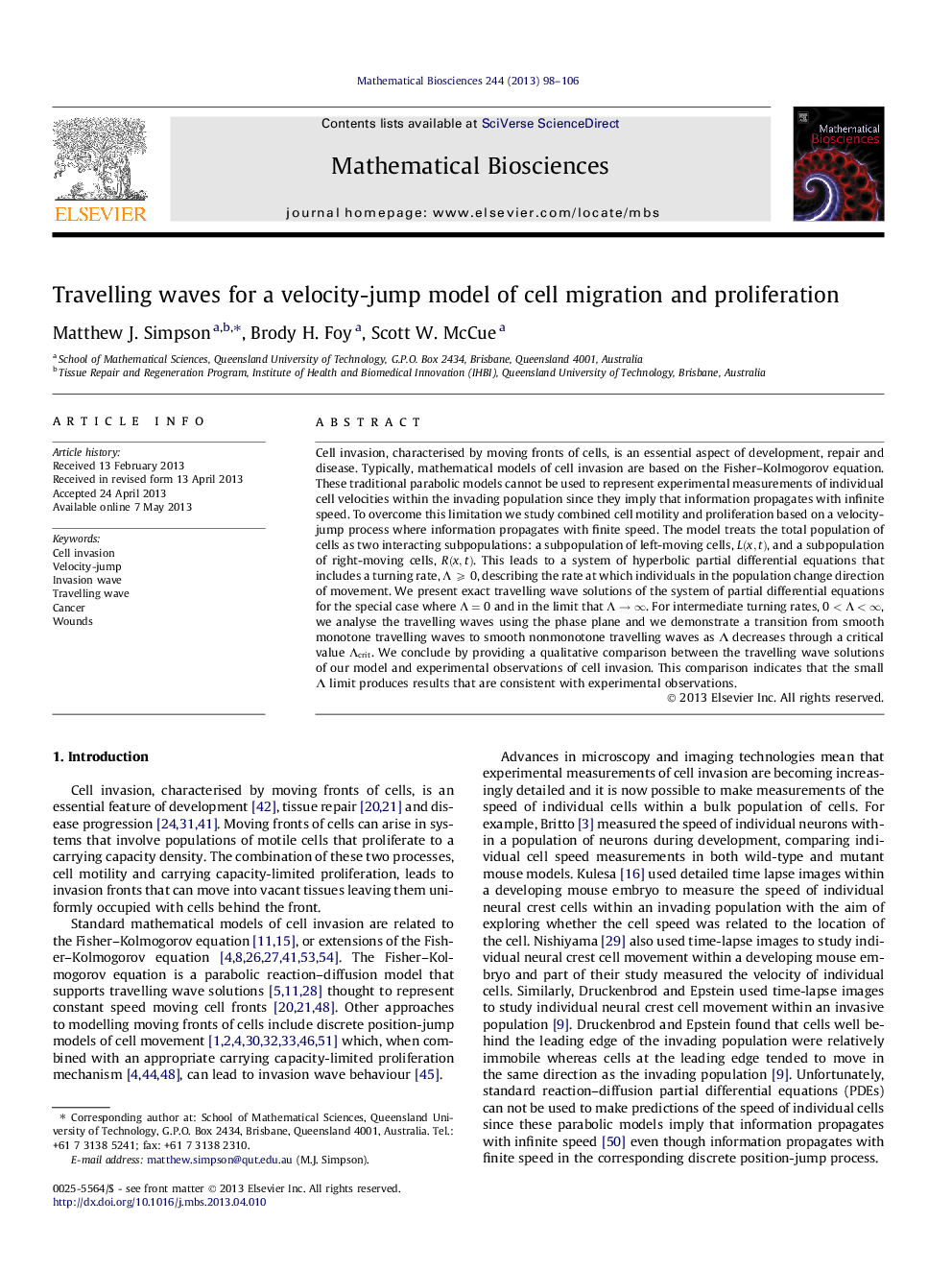| Article ID | Journal | Published Year | Pages | File Type |
|---|---|---|---|---|
| 6372156 | Mathematical Biosciences | 2013 | 9 Pages |
Abstract
Cell invasion, characterised by moving fronts of cells, is an essential aspect of development, repair and disease. Typically, mathematical models of cell invasion are based on the Fisher-Kolmogorov equation. These traditional parabolic models cannot be used to represent experimental measurements of individual cell velocities within the invading population since they imply that information propagates with infinite speed. To overcome this limitation we study combined cell motility and proliferation based on a velocity-jump process where information propagates with finite speed. The model treats the total population of cells as two interacting subpopulations: a subpopulation of left-moving cells, L(x,t), and a subpopulation of right-moving cells, R(x,t). This leads to a system of hyperbolic partial differential equations that includes a turning rate, Î⩾0, describing the rate at which individuals in the population change direction of movement. We present exact travelling wave solutions of the system of partial differential equations for the special case where Î=0 and in the limit that Îââ. For intermediate turning rates, 0<Î<â, we analyse the travelling waves using the phase plane and we demonstrate a transition from smooth monotone travelling waves to smooth nonmonotone travelling waves as Î decreases through a critical value Îcrit. We conclude by providing a qualitative comparison between the travelling wave solutions of our model and experimental observations of cell invasion. This comparison indicates that the small Î limit produces results that are consistent with experimental observations.
Related Topics
Life Sciences
Agricultural and Biological Sciences
Agricultural and Biological Sciences (General)
Authors
Matthew J. Simpson, Brody H. Foy, Scott W. McCue,
